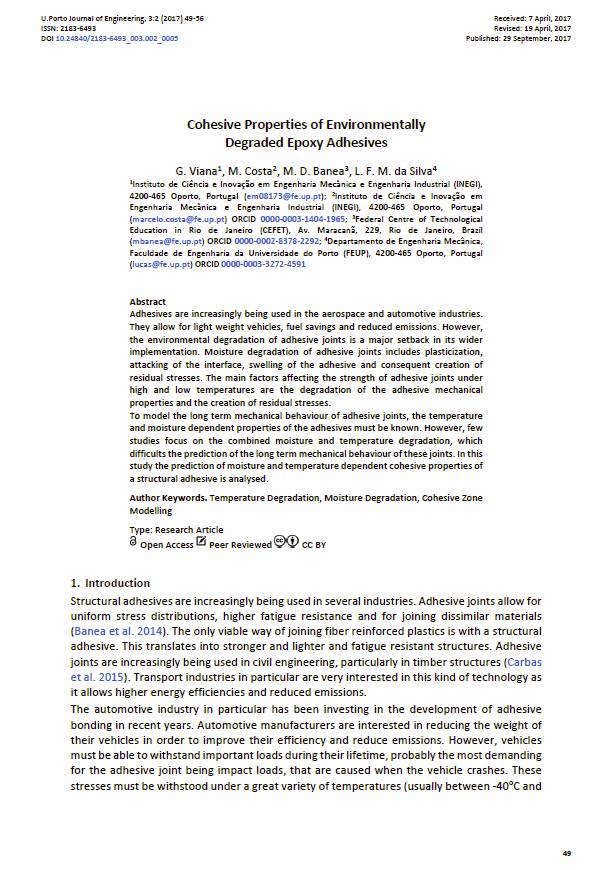Cohesive Properties of Environmentally Degraded Epoxy Adhesives
Main Article Content
Abstract
Adhesives are increasingly being used in the aerospace and automotive industries. They allow for light weight vehicles, fuel savings and reduced emissions. However, the environmental degradation of adhesive joints is a major setback in its wider implementation. Moisture degradation of adhesive joints includes plasticization, attacking of the interface, swelling of the adhesive and consequent creation of residual stresses. The main factors affecting the strength of adhesive joints under high and low temperatures are the degradation of the adhesive mechanical properties and the creation of residual stresses.
To model the long term mechanical behaviour of adhesive joints, the temperature and moisture dependent properties of the adhesives must be known. However, few studies focus on the combined moisture and temperature degradation, which difficults the prediction of the long term mechanical behaviour of these joints. In this study the prediction of moisture and temperature dependent cohesive properties of a structural adhesive is analysed.
Downloads
Article Details
Authors who publish with this journal agree to the following terms:
- Authors retain copyright and grant the journal right of first publication with the work simultaneously licensed under a Creative Commons Attribution License that allows others to share the work with an acknowledgement of the work's authorship and initial publication in this journal.
- Authors grant the journal the rights to provide the article in all forms and media so the article can be used on the latest technology even after publication and ensure its long-term preservation.
- Authors are able to enter into separate, additional contractual arrangements for the non-exclusive distribution of the journal's published version of the work (e.g., post it to an institutional repository or publish it in a book), with an acknowledgement of its initial publication in this journal.
- Authors are permitted and encouraged to post their work online (e.g., in institutional repositories or on their website) prior to and during the submission process, as it can lead to productive exchanges, as well as earlier and greater citation of published work (See The Effect of Open Access).

